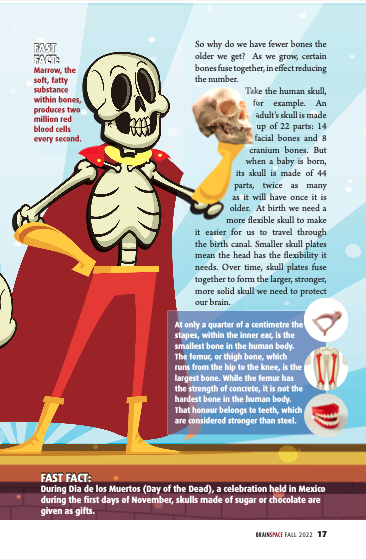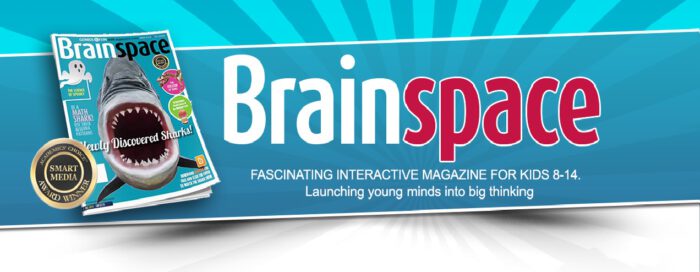
Beneficial Bones


From Halloween costumes to pirate flags, the human skull and the clattering bones of a skeleton have long been popular symbols of death, striking fear into the hearts of all who look upon them.
In reality, our skulls and skeletons make up one of the most life-supporting components of the human body. They act as a structure on which to attach the soft tissues and muscles that provide us with life and move us about. They protect our vital and vulnerable organs within a hard armour. Bones even make essential blood cells and store minerals for when the body is in need of them.
It may not seem like it, but skulls and skeletons are comprised of living tissue that is constantly changing. In a process called remodelling, old bone breaks down to be replaced by new bone.
For children, this allows bones to grow and change shape. For adults, it means that bones can grow stronger and can repair themselves if they are damaged or broken. Remodelling is so effective in replacing our bones that we effectively have a new skeleton every ten years!
So why do we have fewer bones the older we get? As we grow, certain bones fuse together, in effect reducing the number. Take the human skull for example. An adult’s skull is made up of 22 parts: 14 facial bones and 8 cranium bones. But when a baby is born, its skull is made of 44 parts, twice as many as it will have once it is older. At birth we need a more flexible skull to make it easier for us to travel through the birth canal. Smaller skull plates mean the head has the flexibility it needs. Over time, skull plates fuse together to form the larger, stronger, more solid skull we need to protect our brain.
At only a quarter of a centimetre the stapes, within the inner ear, is the smallest bone in the human body. The femur, or thigh bone, which runs from the hip to the knee, is the largest bone. While the femur has the strength of concrete, it is not the hardest bone in the human body. That honour belongs to teeth, which are considered stronger than steel.
FAST FACT:
During Dia de los Muertos (Day of the Dead), a celebration held in Mexico during the first days of November, skulls made of sugar or chocolate are given as gifts.
FAST FACT:
The human skull is extremely helpful in studying our evolution. Scientists are often able to identify age, race and whether a skull came from a male or female.

